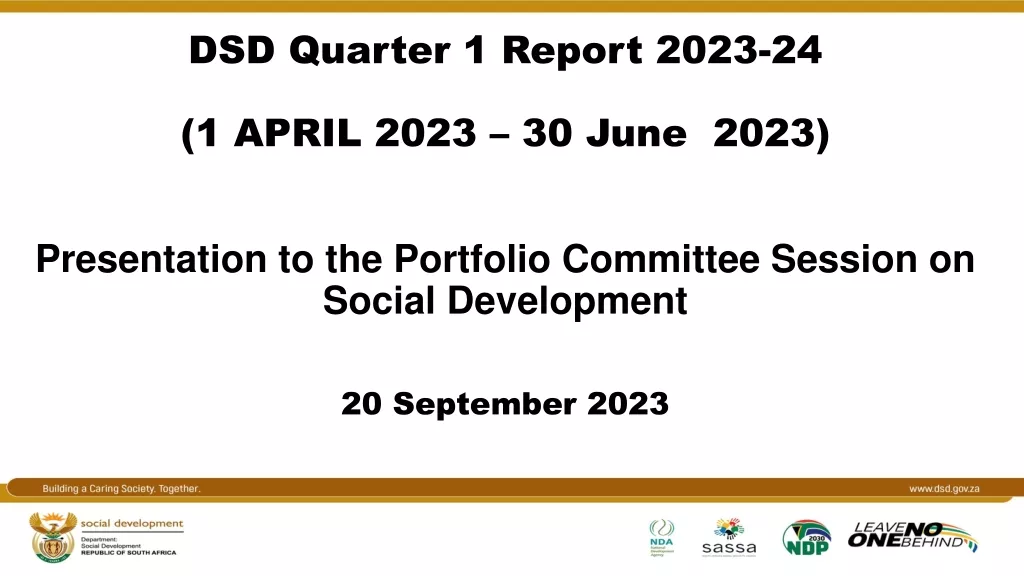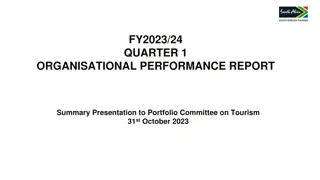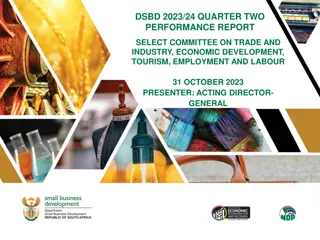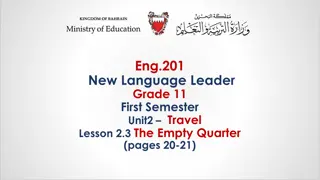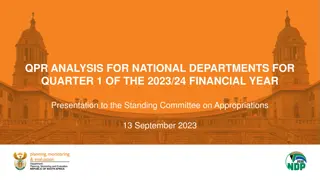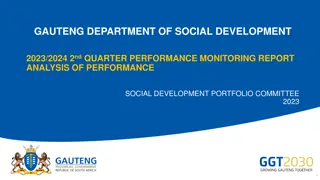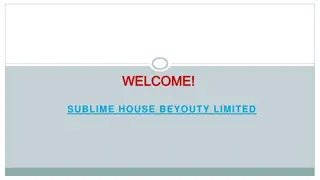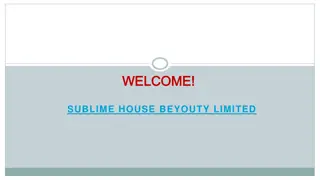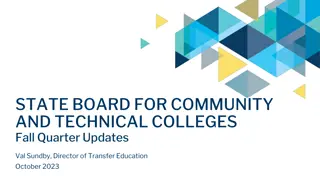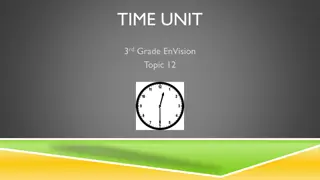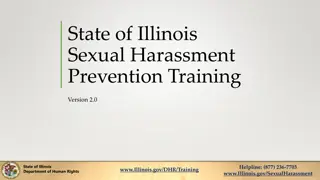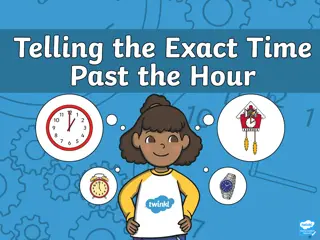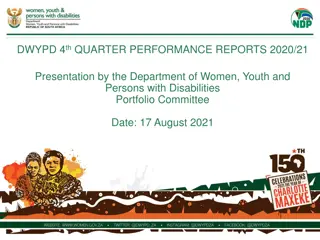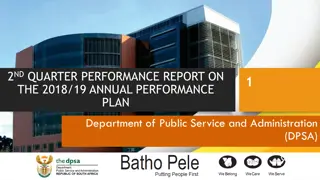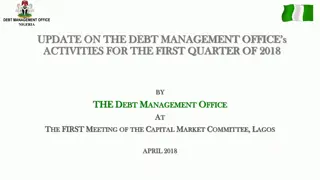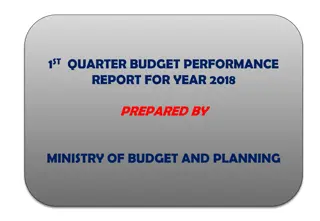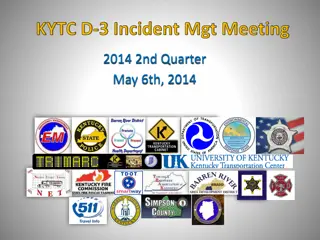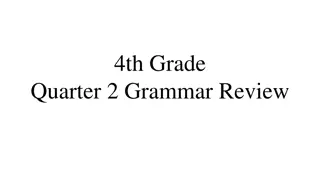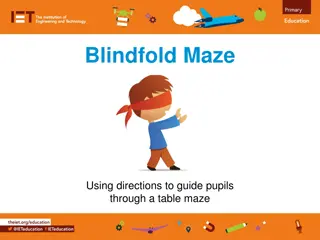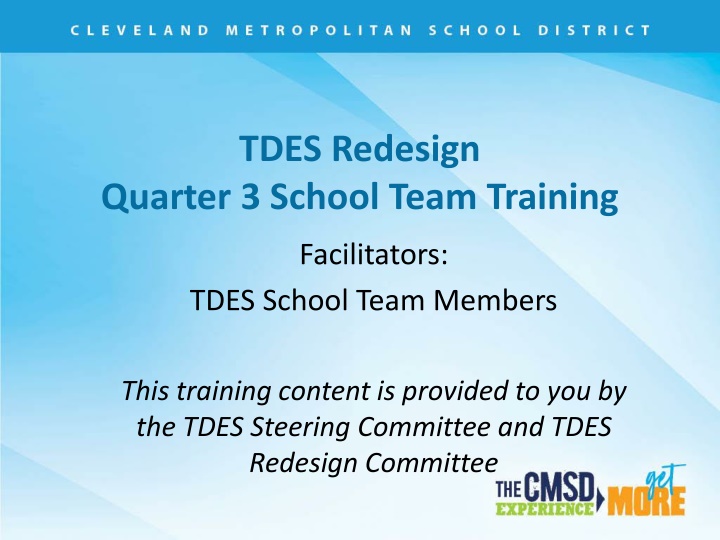
School Team Training: Quarter 3 Redesign Facilitators
Explore the detailed agenda, objectives, and materials for the School Team Training in Quarter 3. Connect to prior learning, delve into high-quality student data, and engage with key topics like PGP conferences and evaluations. Enhance collaboration with your school team for effective learning outcomes.
Download Presentation

Please find below an Image/Link to download the presentation.
The content on the website is provided AS IS for your information and personal use only. It may not be sold, licensed, or shared on other websites without obtaining consent from the author. If you encounter any issues during the download, it is possible that the publisher has removed the file from their server.
You are allowed to download the files provided on this website for personal or commercial use, subject to the condition that they are used lawfully. All files are the property of their respective owners.
The content on the website is provided AS IS for your information and personal use only. It may not be sold, licensed, or shared on other websites without obtaining consent from the author.
E N D
Presentation Transcript
TDES Redesign Quarter 3 School Team Training Facilitators: TDES School Team Members This training content is provided to you by the TDES Steering Committee and TDES Redesign Committee
Agenda Welcome & Introduction Connections to Prior Learning High Quality Student Data Video Vignettes PGP/PIP Conference Paraprofessional D2/D3 Evaluation Unannounced Observations Wrap Up & Next Steps
Objectives: Today we will.. Connect to our prior learning in the Quarter 2 Training Understand the high quality student data changes to the rubric Identify the procedures for the PGP Conference Understand the procedures for the Paraprofessional D2/D3 evaluation Understand the best practices of a Unannounced Post Conference
Materials and Groupings Needed TDES Guidebook, 2019-2020 TDES Events Calendar, 2021-2022 TDES Teacher Rubric, 2019-2020 PGP Check in Form Paper for activities and to take notes on This training will be most effective sitting together with at least one partner from your school team.
Connections to Prior to Learning Activity: Individually or with your TDES school team member(s), reflect and discuss on these questions about our Quarter 2 training for two minutes: What were your specific learning take-aways from our Quarter 2 training? What went well in our Quarter 2 school training? Why? What could have been improved in our Quarter 2 school training? Why?
Connections to Prior to Learning Share Out: Two volunteers share out
HQSD Video Vignettes We created video vignettes for 1b, 1c, 1f and 3d using Master Certified Teachers and PAR Mentors. Big thanks to: Cherylyn Combs, East Clark, Third Grade Catherine Duplisea, Orchard, MLT Marcella Hall, Collinwood, Special Education Laura Kraker, Garrett Morgan, Math Marixa Marreo, New Tech West, Spanish Tequila Pennington-Calwise, Euclid Park, Third Grade Tracy Reid, Preschool, Mary B Martin Christy Rorick-Brown, Gallagher, Special Education T h i s P h o t o b y U
High Quality Student Data Videos Activity: Video Vignettes 3d Directions: * Divide you paper in half * Label one half 3d and the other half post conference * While watching the video, take notes on what you hear on HQSD individually * After watching the video, you will add to your notes in the same column based on your team s discussion
Accessing the Videos Directions: Go to the Waffle in the upper left corner of your Outlook email Select the app, Stream If Stream is not there, click on All Apps and search for Stream Once you are in Stream, type in the search bar at the top, 3d for the video
Videos and HQSD Discussion/Share Out Play Video Vignette 3d After the video, reflect or discuss in pairs or small group: * How did the teachers use HQSD? * What takeaways do you have? Record your team s responses on your paper. Repeat for each video. Whole group share out after both videos have been played.
Component Skilled Description Sample Sources of Evidence 1b: Demonstrating knowledge of students Teacher actively seeks knowledge of students backgrounds, cultures, skills, language proficiency, interests, and special needs, and attains this knowledge for groups of students. Teacher draws upon an accurate analysis on multiple sources of high-quality student data for groups of students. Survey data to get to know student s family and background Analysis of previous year OST /EOC data Analyzing students strengths/weakness from benchmark assessments such as NWEA Examining students language proficiency from OELPA data and/or student artifacts Reviewing a student s IEP A conference discussion where the teacher reflects on their knowledge of students & how she/he obtained this information Source: TDES Guidebook, 2019
Component Skilled Description Sample Sources of Evidence 1c: Setting instructional outcomes Instructional outcomes are stated as goals reflecting high-level learning and curriculum standards that align with the Ohio standards, using multiple sources of high-quality student learning data. Outcomes are suitable for most students in the class, represent different types of learning and are capable of assessment. The outcomes reflect opportunities for coordination Lesson plan outlines goals aligned to curriculum/standards and based on analysis of student data A conference discussion on how goals were determined & based on what data Source: TDES Guidebook, 2019
Component Skilled Description Sample Sources of Evidence 1f: Designing student assessment Lesson plan describes plan for assessment and includes multiple sources from formative/summative assessments A conference discussion where the teacher shares his or her plan for assessment and how to adapt assessment methodology for individual students A conference discussion where the teacher shares his or her plan for future instruction based on student data Teacher s plan for student assessment is aligned with the instructional outcomes, using clear criteria, is appropriate to the needs of students. Teacher intends to use multiple sources of high- quality student data to plan for future instruction for groups of students. Source: TDES Guidebook, 2019
Component Skilled Description Sample Sources of Evidence 3d: Using assessment in instruction The teacher uses aligned formative or summative (formal or informal) assessment(s) to check for understanding for subgroups of students. There is monitoring of progress of learning by teacher and/or student. Consistent, actionable, high-quality feedback is given to students. Observes administration of formative or summative assessment such as quizzes, projects, benchmark assessments Observes feedback provided to students such as after students present from a performance-based assessment Observes teacher or peer feedback provided to students Source: TDES Guidebook, 2019
Menu of Sources of HQSD Assessment Types Assessment Names OST/EOC NAEP OELPA/PS AASCD SAT AP KRA Splash NWEA PSAT aimswebPlus ASQ/ASQ-SE State PE Test Preschool ELA Grade K Diagnostics CoGat WebXam WorkKeys Childhood Outcomes Summary Formal Formative/Summative Assessments Student work samples Projects Curriculum based assessments Labs Teacher made tests/quizzes Performance based assessments Anecdotal notes/observations Informal Formative/Summative Assessments Source: TDES Guidebook, 2019
Who Has a PGP Check-In? All professionals who are in an off year from an Accomplished or Skilled rating wrote a growth plan at the start of the year and will have a PGP check in during second or third quarter
Where Does the PGP Check-In Occur? If at least one goal is on-stage, the check in takes place in the classroom; if both goals are off-stage, the check in is a conference
How to Conduct a PGP Check-In Professional and Evaluator mutually agree to the date and time for the check in Evaluator will visit the classroom for no more than 30 minutes focusing on providing feedback only on the goals identified within the PGP Evidence is collected on the PGP Check-In Form and not submitted in the portal. Professionals get a copy of the PGP Check-In Form.
How to Complete the PGP Check-In Form Now that the Check-In as a classroom visit/conference has taken place: Note on the form if the PGP is Self-Directed or Collaborative Goal Statements and Evidence Indicators are taken directly from the Professional Growth Plan in the portal. Dates note the date of the check-in and conference Areas for Professional Growth add supports or resources that can assist The check-in form is only to be used to document that the check-in occurred and is not uploaded into the TDES Portal
How to Conduct a PGP Check-In Conference Professional and evaluator schedule the PGP Conference for a mutual time. The conference should be scheduled within 10 working days of the check-in. Professional and Evaluator meet for up to 20 minutes. Evaluator focuses on providing feedback on the goals identified in the growth plan.
Finalizing the Growth Plan Check In Evaluator notes in the TDES portal the professional s progress at the conference. This is under the Growth Plan Tab. Progress towards professional goals is intended to be developmental for the professional, and is not to be used for discipline. Check off in the portal that the GP was done Evaluator and professional keep a copy of the Growth Plan Check-In form, but it does not go in the portal
Best Practices for the Growth Plan Conference Teacher will start process by scheduling the growth plan visit Evaluator will confirm Evaluator will observe at the scheduled time (30 minutes) and take notes relevant to the growth plan goals on the growth plan check-in form Evaluator & professional will schedule conference after the visit similar to Unannounced Observation. Conference should be held in teacher s classroom when possible. Evaluator should thank the professional for inviting to them to the observation and taking time to discuss.
Best Practices for the Growth Plan Conference Evaluator should ask professional to share reflection on progress towards PGP goals, evidence from observation as well as other relevant evidence. Evaluator should also share evidence collected during observation, and when appropriate, ask questions that lead the professional to deeper reflection. After professional shares, evaluator can also share strategies to help improve instruction. Evaluator should then summarize the reflections and ask the professional if additional supports are needed.
Best Practices for the Growth Plan Conference Evaluator and professional should agree on whether progress has been made at the time of the conference. (Note there is no consequence for progress not being made, but rather the evaluator should provide more support for the professional) Evaluator should mark in the portal to indicate if progress is being made In the event progress is not being made, Evaluator can offer additional supports and offer to come back if the professional would like further support Both evaluator and professional sign the Growth Plan Check-in Form and a copy is given to the professional (this does not go in the portal)
Due Dates PGP Check in: Quarter 2 - Quarter 3 (beginning on October 25; ending March 11 YRS or March 18 Traditional) PGP Conference: Quarter 2 - Quarter 3 (see dates above)
Paraprofessional Evaluations Domain 2 & 3 evidence collection post conference should be complete and in the TDES portal by March 11, 2022
Paraprofessional Evaluations Domain 2 and 3 Evidence Collection can begin without the evaluator scheduling the conference or submission date.
Paraprofessional Evaluations Directions 1. Evaluator schedules conference date. 2. Para reviews and confirms conference date. 3. Evaluator confirms conference date. 4. Para submits evidence for Domain 2/3 5. Para completes self evaluation on rubric. 6. Evaluator reviews evidence and marks areas of agreement/disagreement on the rubric. 7. Para and Evaluator meet for a conference and discuss areas of disagreement and finish the rubric
Paraprofessional Evaluations There are no rubric changes to the paraprofessional rubric.
Unannounced Observations for Teachers
Unannounced Post Conference Activity: Video Vignette Unannounced Post Conference Directions: * Use the half of paper you labeled post conference * While watching the video from the Stream app, take notes on what you hear about the UO post conference Big thanks to Principal Rachel Snider & Teacher Jim Wagner at Ben Franklin!
Best Practices of the Unannounced Post Conference What best practices did you observe in the video? Begins with reflection and feedback Discuss areas of disagreement by reviewing evidence and the rubric language Professional knows ratings by the conclusion of the conference Professional conversation Sign off on the post conference
Unannounced Procedures (1 of 2) 1. Evaluator conducts classroom observation of at least 30 minutes. 2. Evaluator submits evidence in the portal within 24 hours; teacher can add evidence if desired within 24-48 hours. 3. High Quality Student Data, and other components of Domains 1 and 4 are not required to be in the daily lesson plan. The professional may add evidence in the portal prior to the post-conference
Unannounced Procedures (2 of 2) 4. Evaluator schedules post-conference in the portal. 5. Teacher self-assesses on the rubric. 6. Evaluator marks areas of agreement on the rubric. 7. Teacher and evaluator meet for a post- conference to discuss ratings and complete rubric within ten days of observation.
Unannounced Observation Teachers should have a daily lesson plan per the CBA The lesson plan can be attached as evidence The Unannounced Observation is intended to capture all four domains and is not limited only to Domain 2 or Domain 3
Unannounced Observation The UO occurs within a ten-day cycle, beginning with the date of the observation The observation must be a minimum of thirty minutes which is required by state law (and the CBA) Steps need to be marked complete by teachers and evaluators. All checks should be green
TDES Co-Chairs Unannounced Message The 2022 Unannounced Observation will be taking place while COVID-19 mitigation strategies are in place. While these mitigation strategies are in place, professionals and evaluators should take these strategies into consideration during TDES events for both evidence and ratings. For example, groupings of students, classroom set up, organization of physical space, and handling of supplies may look very different this year than in a traditional year. (continued)
TDES Co-Chairs Unannounced Message The CEO s guidance requires 3 feet of social distance between students. This may not allow for small groups and class layouts that are typically expected. Unannounced observations should not compromise social distancing or other COVID protocols. The evaluator and professional should take into consideration these mitigation factors when adding evidence into the portal and when making ratings for the Unannounced Observation as a professional should not be harmed for mitigation strategies outside of their control. Evaluation events should not occur while a professional is covering a class for another professional, nor while testing is occurring.
Next Steps UOs are due February 25 Paras D2/D3 due March 11 GP Check-in/Conference (off year teachers only) due March 11- YRS and March 18- traditional Ask for support, if needed, from your TDES School Team

